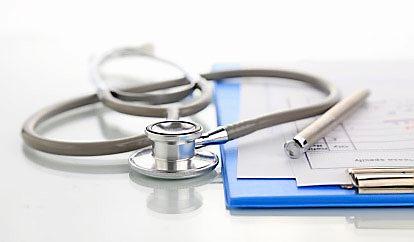
Cases of COVID-19 in Minnesota are ticking up. Here’s what to know
Wastewater data shows an uptick in COVID-19 infections in many parts of the U.S., including Minnesota, this July.
“It definitely seems that COVID case counts are rising both nationally and locally,” said Dr. Priya Sampathkumar, an internal medicine physician and head of Infection Prevention and Control at Mayo Clinic.
Data from WastewaterSCAN, which has Minnesota data from St. Cloud, Red Wing, Mankato and Rochester, shows a rising level of COVID RNA found in Rochester’s wastewater since late June. The amount of virus detected had been low and stable through the early summer. Now, the level detected mirrors the amount of virus found in late January 2024, as a spike of winter cases fell.
Wastewater data for four Minnesota cities (Rochester, Red Wing, Mankato and St. Cloud) from April 22, 2024 to July 22, 2024 all show increases in the amount of COVID-19 RNA found in wastewater, indicating that more people are catching COVID. (Contributed / Wastewater SCAN)
That has translated to primary care providers seeing more patients lately with respiratory illness symptoms, Sampathkumar said, although the number of self-reported positive tests has increased. And though the number of people hospitalized with COVID has increased slightly this month, Sampathkumar said, most cases “still seem to be relatively mild, probably because of prior immunity either from vaccination or prior COVID illness.”
The percentage of visits to local emergency rooms is still declining, however, said Matthew Giljork, an Olmsted County Public Health epidemiologist.
“Hospitalizations have not translated to an increase in ICU utilization or deaths so far,” Giljork said.
At Olmsted Medical Center, they have not observed an increase in hospitalizations, said Dr. Odette El Helou, an infectious disease physician at OMC.
At the state level, per the Minnesota Department of Health’s July 25 update, COVID hospitalization rates increased slightly over the previous week but still remain low.
A summer wave of COVID infections is not necessarily unusual — Sampathkumar said it appears that COVID is settling into a seasonal pattern: a peak of cases in the winter, and a smaller peak in the summer.
Other factors, El Helou said, are people traveling more during the summer — and therefore being more exposed to the virus — and the level of protection from last fall’s COVID vaccines is beginning to wane.
Same prevention measures
To avoid getting sick, the same precautions that health professionals have been sharing since the start of the pandemic still work.
“Practice good hygiene, wash hands,” said El Helou, “good ventilation — stay outdoors if possible, open the windows of your home if you have other people in.”
For vaccinations, the Centers for Disease Control and Prevention last month recommended that everyone 6 months and older receive an updated 2024-2025 COVID vaccine this fall alongside the seasonal influenza vaccine.
“COVID boosters, we hope, will be available by early September,” Sampathkumar said. “Everyone should definitely seek out that vaccine and get it. As we’ve all seen, getting vaccinated may not completely protect you from getting a COVID infection, but it’s very, very effective at preventing serious illness and preventing deaths.”
If you do get sick, get tested early to see if it is COVID, Sampathkumar said, so you can seek treatment like Paxlovid if you are eligible.
“We recommend you stay home if you have symptoms and that you wear a mask for at least the time that you have symptoms and potentially for up to five days after your symptoms improve to protect everyone else around you,” Sampathkumar said.
Related Articles
Long COVID risk has decreased but remains significant, study finds
President Joe Biden tests positive for COVID-19 while campaigning in Las Vegas, has ‘mild symptoms’
Cory Franklin: Anthony Fauci made mistakes during the pandemic, but prosecution isn’t warranted
Travel: What I’ve seen on 33 cruises I’ve taken since the pandemic
Do you have COVID? Here’s how long the CDC recommends you stay home

